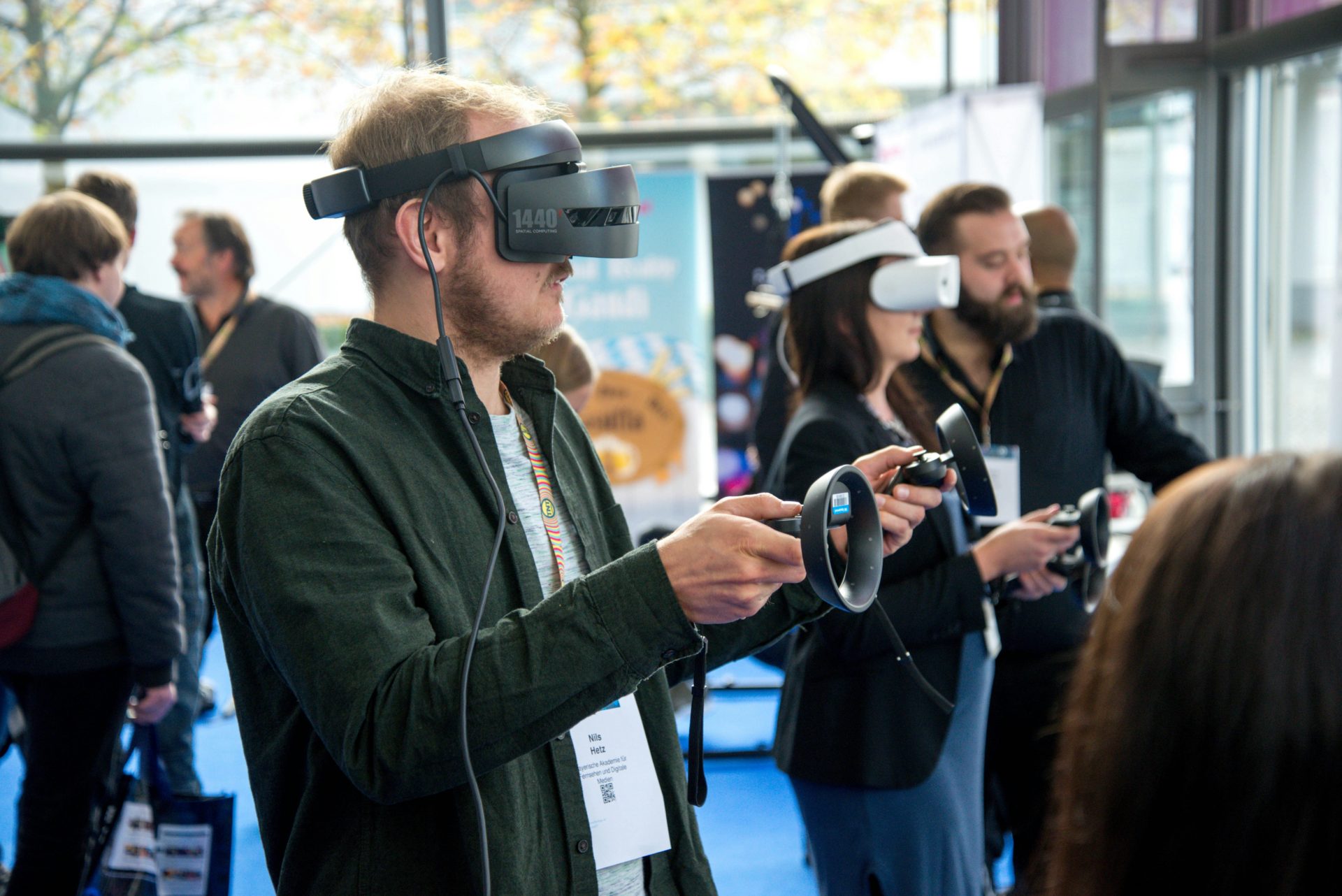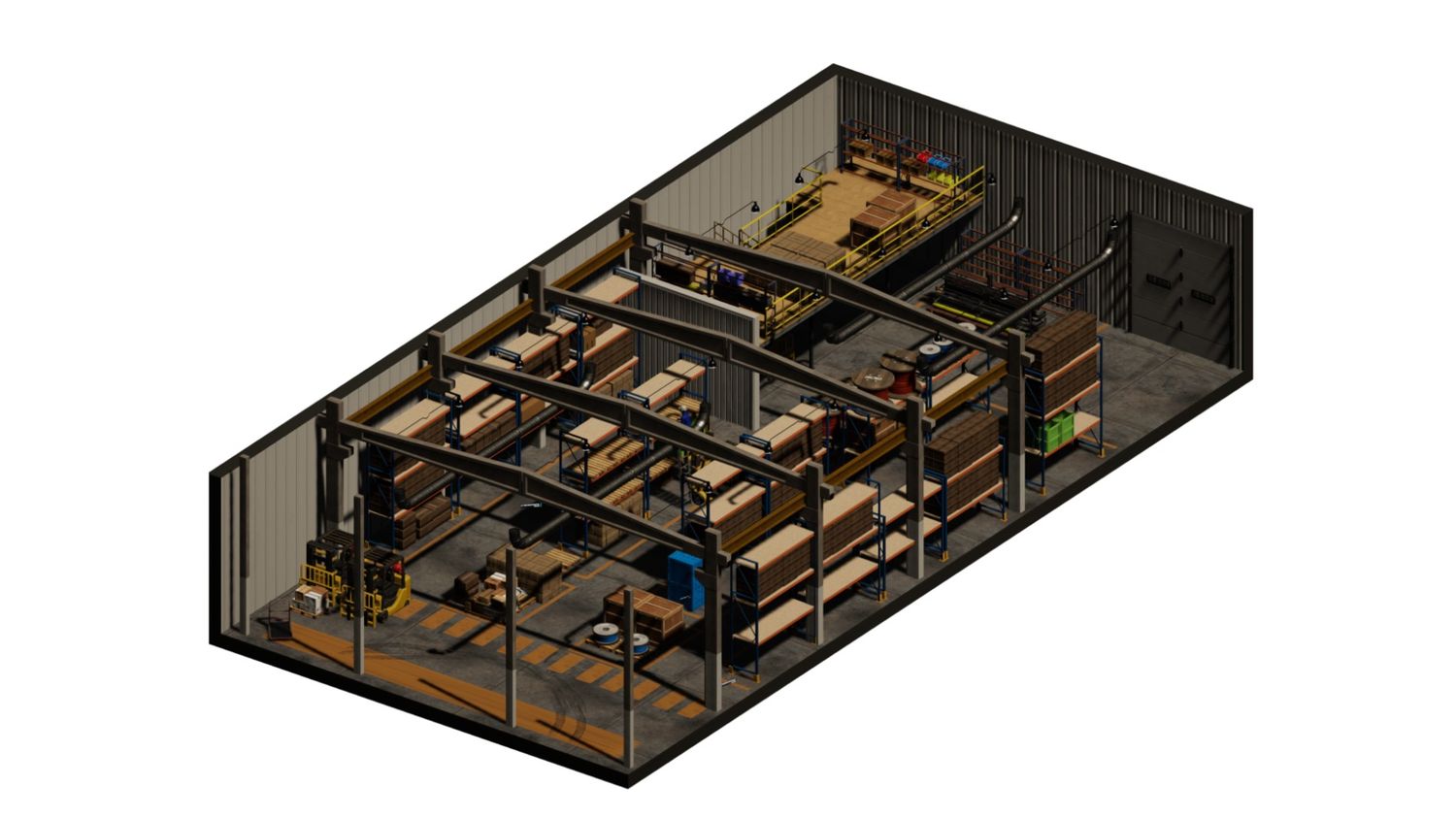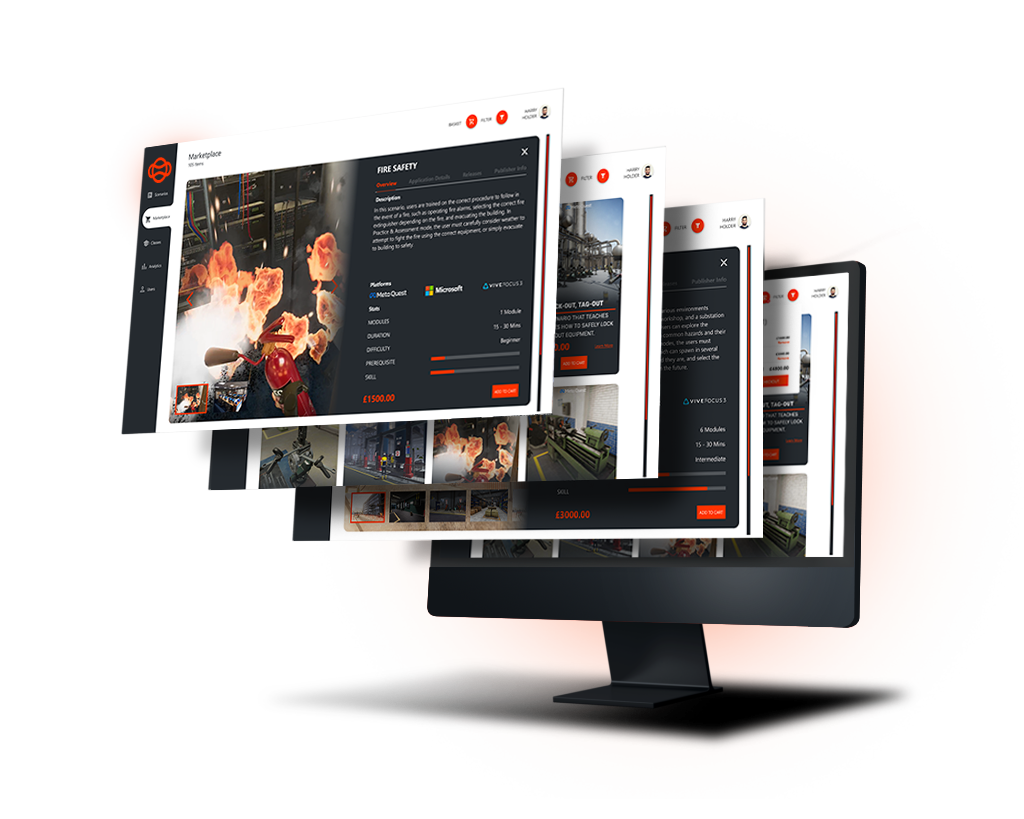
If you’re looking into VR workplace training you might be wondering what different types of training you can try. There are two main types of training you can get which are:
· Bespoke VR content: VR training content customized and developed from scratch to suit your specific environments, procedures scenarios in your company.
· Off the shelf training content: Pre-built VR content that is ready to roll-out immediately with no need for customization.
In this blog we’ll explore off the shelf content a little bit more in depth, covering:
· Why businesses might invest in off the shelf content
· Off the shelf VR vs Bespoke VR
· The benefits of off the shelf content
· Off the shelf content that we at Luminous offer
Why might a business invest in off the shelf VR content?
You might be new to the world of XR and only just discovering what VR is and how it can play a part in your business. If this the case, jumping straight into developing bespoke VR content might be quite a big jump. Off the shelf content is perfect for getting familiar and testing VR across your business where it suits a specific need and can be applied to a range of areas your workforce need to upskill on, like safety skills or hazard recognition.
With businesses seeking new ways to streamline operations whilst still maintaining high standards of training, off the shelf VR training content provides the perfect solution.
Opting for pre-built VR content means you can skip the lengthy development process associated with bespoke solutions, resulting in faster deployment times and immediate access to high quality training modules. This means your businesses can address training needs promptly without sacrificing quality.
What are the main differences between Off the Shelf VR and Bespoke VR training content?
When choosing virtual reality (VR) training solutions businesses are often faced with the choice between off the shelf and bespoke options. Each have their own pros and con, which is why it’s important for businesses to carefully evaluate their training needs and objectives before making a decision. So, what are the pros and cons between off the shelf VR and bespoke VR? Let’s take a look…
Pro: Off the Shelf VR content is more cost effective
While bespoke VR content offers tailor-made solutions that align with a company’s specific requirements, it often comes with a hefty price tag and time-consuming development cycles. Off the shelf VR content, on the other hand, provides a cost-effective alternative that doesn’t compromise on quality.
While it may not offer the same level of customization, off the shelf content still delivers immersive and effective training experiences. This makes it an attractive option for businesses looking to implement VR training quickly, whilst sticking to budget constraints.

Why is bespoke VR content more expensive than off the shelf VR content?
Bespoke VR content is customized from scratch to meet the specific requirements of a company and requires a lot of processes. Requirements gathering must be conducted properly to ensure scenarios are developed properly and replicate standard operating procedures (SOPs) correctly, this involves working closely with subject matter experts within your business as well as on-site visits to walk through procedures and capture your environment to create a digital twin.
In addition, Art and environment 3D modelling is a key part of building bespoke VR content. For training to be effective the environment must be as realistic as possible, and creating hyper-realistic environments and replicating objects within those environments takes a lot of specialist skill, time and development, which is reflected in the cost.
For example, the full virtual reality warehouse environment would take around 21 days to model.
Pro: No development resource or cost is required with off the shelf VR
Off the shelf VR content provides a ready-made alternative that can be deployed immediately, saving both time and resources. Since off the shelf content is pre-built and standardized, businesses can bypass the development process and access training modules right away. This quick turnaround time not only accelerates the training implementation process but also reduces upfront costs associated with custom development. For organizations looking to implement high quality VR training quickly, off the shelf content is a win-win.
Con: There isn’t as much customization and flexibility with off the shelf content
While off the shelf VR content offers speed and cost-effectiveness, it may lack the level of customization and flexibility provided by bespoke training content. Bespoke VR content can be tailored to reflect the specific environments, procedures, and scenarios of a company, ensuring maximum relevance and applicability to real-world situations. This customization allows you to address unique training needs within your business, rather than the standardized nature of off the shelf content.
But like we mentioned previously, this customization brings longer development timeline and higher costs. It’s important for business to evaluate their training needs and weigh up the benefits of tailor-made content against the resources required to achieve it.
What are the benefits of Off the Shelf Content?
Improved employee engagement compared to traditional learning methods
VR training offers a completely unique and immersive learning experience has a huge impact on employee engagement compared to traditional learning methods. V-learners complete training 4x faster and are more emotionally connected to content than classroom learners (PwC).
By embracing virtual reality technology, training modules can simulate realistic workplace scenarios, allowing employees to interact with the environment and practice essential skills in a safe and controlled setting.
Employees get to start using VR straight away
Once you’ve purchased off the shelf VR content, then you’re ready to go and all you need is your hardware. Because training modules are pre-built you can address training needs promptly and ensure that employees have access to the resources they need to succeed.
You can measure your training outcomes
Off the shelf VR that comes with a learning management system enables organizations to measure training outcomes effectively and continuously, providing valuable insights into the effectiveness and impact of training initiatives. With built-in analytics and reporting features you can track learner progress, assess performance, and identify individual areas for improvement so trainees really get the most out of their training.
This data-driven approach to training evaluation allows organizations to make informed decisions about their training programs, optimizing content and delivery methods to get the most out of training material. Being able to measure outcomes means that businesses can demonstrate the ROI of their VR training investments, justify resource allocations, and continuously improve the effectiveness of their training initiatives.

What’s the best VR off the shelf content library?
The best VR content guides users efficiently through processes and enables users to perfect, memorize and put their skills into practice and we believe that with our 3 core training modes as standard, that our content is the best quality VR training content out there. The Luminous marketplace which is coming soon will allow creators, developers, and businesses to share their training content with anyone who wishes to purchase it. Should it pass our design standards and best practice, these courses will appear on the Luminous Marketplace which will house the highest quality XR training content globally.
What off the shelf content do you offer at Luminous?
Here at Luminous XR, we specialize in providing off the shelf VR training content designed to improve safety skills and hazard recognition in high-risk industries. Our current marketplace houses our modules developed in house by our talented team of developers, artists and designers after working closely with a range of businesses in the energy and manufacturing industries:
Safety Skills Training
Our safety skills off the shelf VR training covers key induction modules for workers in industrial environments. Modules include:
· VR Induction and Lobby
· PPE and Work Permit Procedures
· Confined space training
· Working at heights
· Hot work High/low energy
· Line and equipment opening/ valve opening
Employees can develop the knowledge and skills necessary to mitigate risks and prevent accidents in the workplace in safety skills.
Hazard Recognition Training
Hazard recognition VR training is crucial for identifying potential dangers in the workplace and taking appropriate precautions to avoid any accidents and injuries. Our hazard recognition training modules cover hazard recognition across a range of industrial environments:
· VR induction and Lobby
· Warehouse hazards
· Substation hazards
· Workshops
· Construction sites
With our off the shelf VR training content, businesses can empower their employees with the knowledge and skills necessary to create a safer work environment and reduce the risk of incidents. Our off the shelf content is ready to roll out immediately, providing businesses with the tools they need to be compliant, safety aware, and protect their most valuable asset—their employees.
Want to try some of our off the shelf content? Check out Hazard Recognition and Safety Skills over on the Luminous Marketplace or schedule a call with one of our experts to see them in action and try before you buy.
Need something more bespoke?
As well as off the shelf VR training content, we offer bespoke VR content creation for immerse learning that fits your exact business requirements. Learn more about our bespoke VR training content here.
FAQs
What is VR training?
Virtual Reality (VR) training is a technology-driven approach to learning that leverages immersive virtual environments to simulate real-world scenarios and provide hands-on training experiences.
By wearing a VR headset, users are transported to virtual environments where they can interact with objects and tools, and practice tasks in a safe and controlled setting until they become second nature.
Learn the differences between virtual, mixed and augmented reality here.
How do you create VR training content?
Creating VR training content involves several steps, including planning, design, development, and deployment. Here’s an overview of the process:
1. Requirements gathering
2. Storyboarding
3. Create the content
4. Feedback and testing
5. Deployment and delivery
Immersive learning is continuing to grow in popularity and there is a huge appetite for VR content, which is why we created FLOW, our visual scripting tool for the Unity games engine that makes it possible to design and publish immersive training courses by simply dragging and dropping content. Courses created with FLOW can then be shared and sold on our marketplace.
Flow is ideal for companies wanting to create customized training at scale in-house to maintain a high-quality training library so employees can upskill and retrain or for development studios whose clients need XR training content.